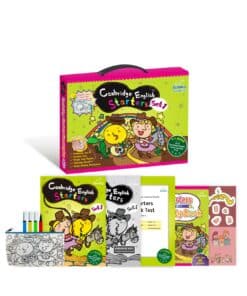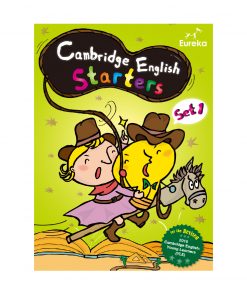Running Dictation
Contributed by: Veronica
How to play:
1. Attach a few words or sentences to the wall around the classroom
2. In groups of 3-4, students send 1 runner to memorize as much of the text as they can.
3. The “runner” returns to the group and the “corrector” holds the eraser and checks if the writer makes any mistakes (spelling or punctuation).
4. The “writer” in the group writes, while the “corrector” holds the eraser and checks if the writer makes any mistakes (spelling or punctuation).
5. The runner can either return multiple times, or the roles in the group switch.
Safety note: Be very clear that the runner must walk and only the runner can get up. Check with ICQs: “How many people from each group can be standing?”
Differentiation: Many ways to vary this!
Easier: Same easy, short text (multiple copies so that not all student groups are crowding around the same place)
Medium: Paragraph
Hard: Students have a sheet of questions. and must scan the short paragraph of text for the answer
Variation: Instead of posting the text on the walls, have other students hold it and be “readers”! (eg. I did this once where all P2 groups had a worksheet with the 7 days of the week and a blank next to it. The runner had to ask the reader “What does Wally do?” and the reader would read a text “On Mondays, Wally likes to play badminton and go swimming”. They would return to their group to share that for Monday they should write badminton and swimming).
Materials: Tag/necklace/lanyard/sticker to indicate who the “runner” is. VERY important to emphasize only the person with this can move around the room!
Suggested age: P1 – P6
Time needed: 25 minutes for first play (with planation) ; 15-20 minutes afterwards
Especially good for: Integrated skills – reading & writing
Disappearing Text
Contributed by: Veronica
How to play:
1. Write a few sentences of text on the board
2. Students read the text aloud.
3. Teacher erases a few words from the text.
4. Ask students to try to read the text again (including the missing words!)
5. Continue to erase words to up the challenge
Differentiation: Vary the length of text or words removed
Materials: chalkboard
Suggested age: P1 – P6
Time needed: 15 mins
Especially good for: Practicing parts of speech (erase only prepositions) ; Memorizing a passage (eg. Speech Festival Choral Speaking)
Chapter Masters (part 1)
Contributed by: Veronica
How to play:
1. Assign a chapter (or page) to students (alone, in pairs, or in groups)
2. Give time for them to read it thoroughly, setting clear tasks. FIRST: Read it, and ask teachers to explain words or sections they don’t understand. They should write these down as a vocabulary bank! SECOND: Decide three questions about the section that they can use to quiz their classmates on. They should prepare the answer in advance as well.
Differentiation: Alone will be most difficult, in groups easier
Materials: Worksheet with spaces for: New vocabulary + meaning ; 3 questions + answers
Suggested age: P5 – P6
Time needed: 15-20 mins
Especially good for: Non-fiction texts ; Skimming and scanning skills ; Building confidence
Chapter Masters (part 2)
Contributed by: Veronica
How to play: Class goes through the book section by section with the following pattern:
1. Chapter masters to the front of the room.
2. Rest of the students read that section (with the “chapter masters” group getting one final chance to ask the teacher about any words they don’t understand).
3. Rest of the students have 3 minutes to try to “stump” the Chapter Masters by asking about difficult vocabulary words. The Chapter Masters can use their vocabulary bank to explain the meaning to the class. IF a student asks about a word that the chapter masters cannot describe, that student’s group gets a point. IF the Chapter Masters successfully explain the meaning, they get a point.
4. Chapter Masters get to quiz their classmates using the three questions they prepared, and whichever group answers first and correctly gets a point.
Differentiation: Alone with be most difficult, in groups easier
Materials: Worksheet with spaces for: New vocabulary + meaning ; 3 questions + answers
Suggested age: P5 – P6
Time needed: 15-20 mins
Especially good for: Non-fiction texts ; Skimming and scanning skills ; Building confidence
Buzz Word / Hot Word
Contributed by: Veronica
How to play:
1. Assign one word to be the hot word for the page/sentence/section.
2. Any time students hear that word as you read aloud as a class, they should put their hands on their heads.
3. Teacher walks around giving points (in the form of small pom poms, paperclips placed on the students’ desk) for the first people to do it, without interrupting the reading for too long
4. Change the hot word every few pages/sections/sentences
Remarks: Give points generously, and ask at the end how many they have.
Differentiation: For a listening activity, don’t let students see the text. For weaker students, they are able to copy faster students. For a challenge, make the hot word a category instead (eg. verbs)
Materials: Points counters (should be silent, don’t roll, so that students don’t place with them on their desks)
Suggested age: P1 – P6
Time needed: Variable
Especially good for: Keeping engagement high
What’s Next?
Contributed by: Veronica
How to play:
1. Stop the reading to make predictions about what will happen next in the story.
Optional: Have students write or draw their predictions, and check if they were right
Differentiation: Creating a prediction together as a class, in pairs, alone
Materials: Optional: Paper to write / draw prediction
Suggested age: P1 – P6
Time needed: 5-10 mins
Especially good for: Building intrigue/investment in the rest of the story
Slow Reveal
Contributed by: Veronica
How to play:
1. Cover the image / front cover of the book (with blank squares on PPT or with sticky notes on visualizer)
2. Slowly remove the covered bits and ask students to guess what it is, or what they think the story will be about based on how much they can see.
Differentiation: n/a
Materials: Sticky notes (optional)
Suggested age: P1 – P6
Time needed: 3 mins
Especially good for: Developing critical and creative thinking
Reader’s Theatre (in 1 lesson)
Contributed by: Veronica
How to play:
1. Photocopy the text and hand out the different pages to different students
2. Give one task at a time to guide the students through preparation. eg. “read one time” “read again, and circle any words you do not understand” “read again, and underline any words you do not know how to say” “read again, and highlight one word in each sentence that you think should be emphasized”
3. Give adequate amount of time to practice reading, with clear expectations and example given of what teacher expects (eg. not a robot, reading with expressions, etc.)
Differentiation: Separate the pages into 2 piles (easier and more challenging) in advance. Subtly give the pages according to student’s level
Materials: Photocopied text
Suggested age: P3 – P6
Time needed: 10-15 mins to prepare, plus reading time
Especially good for: Fluency and confidence building






